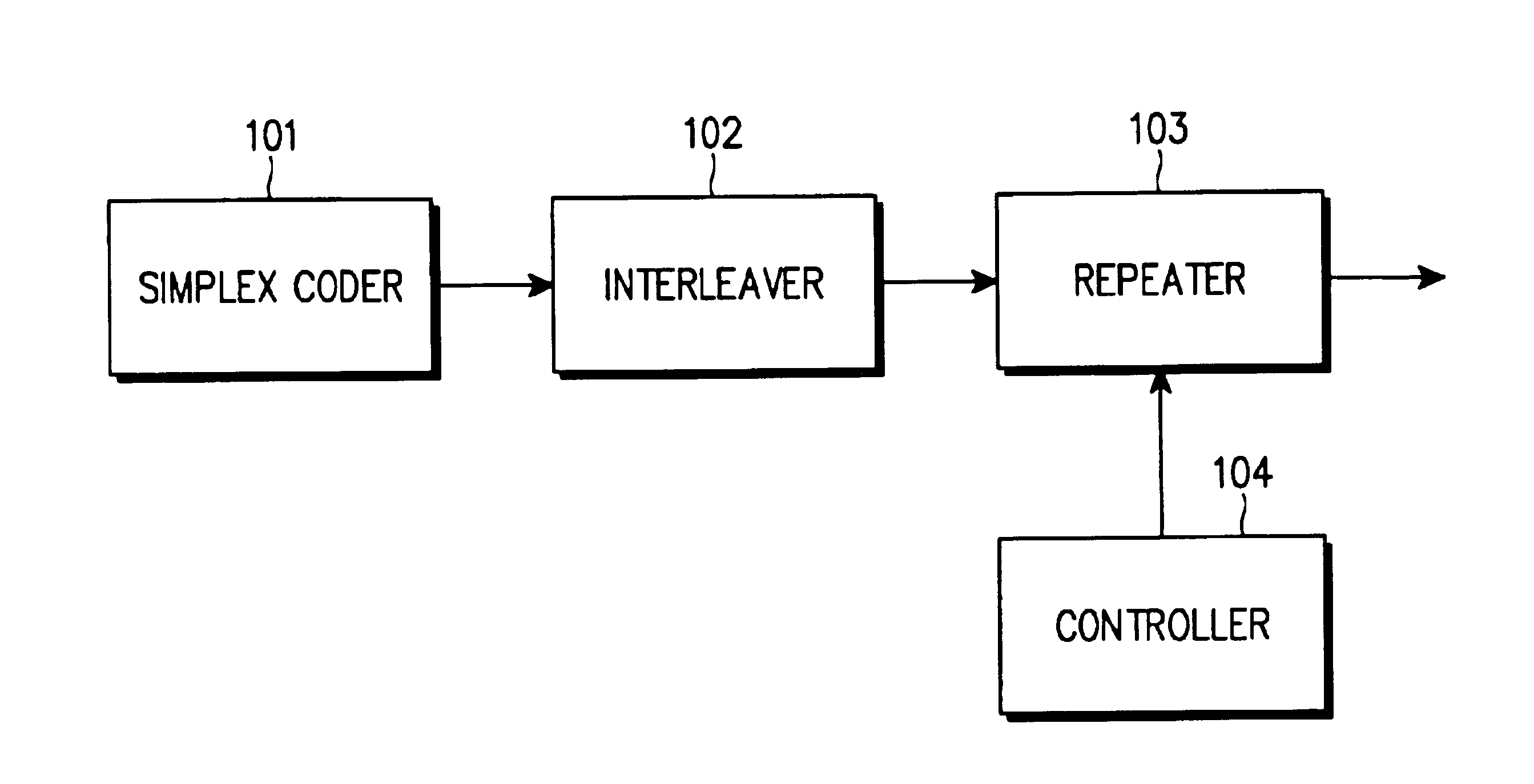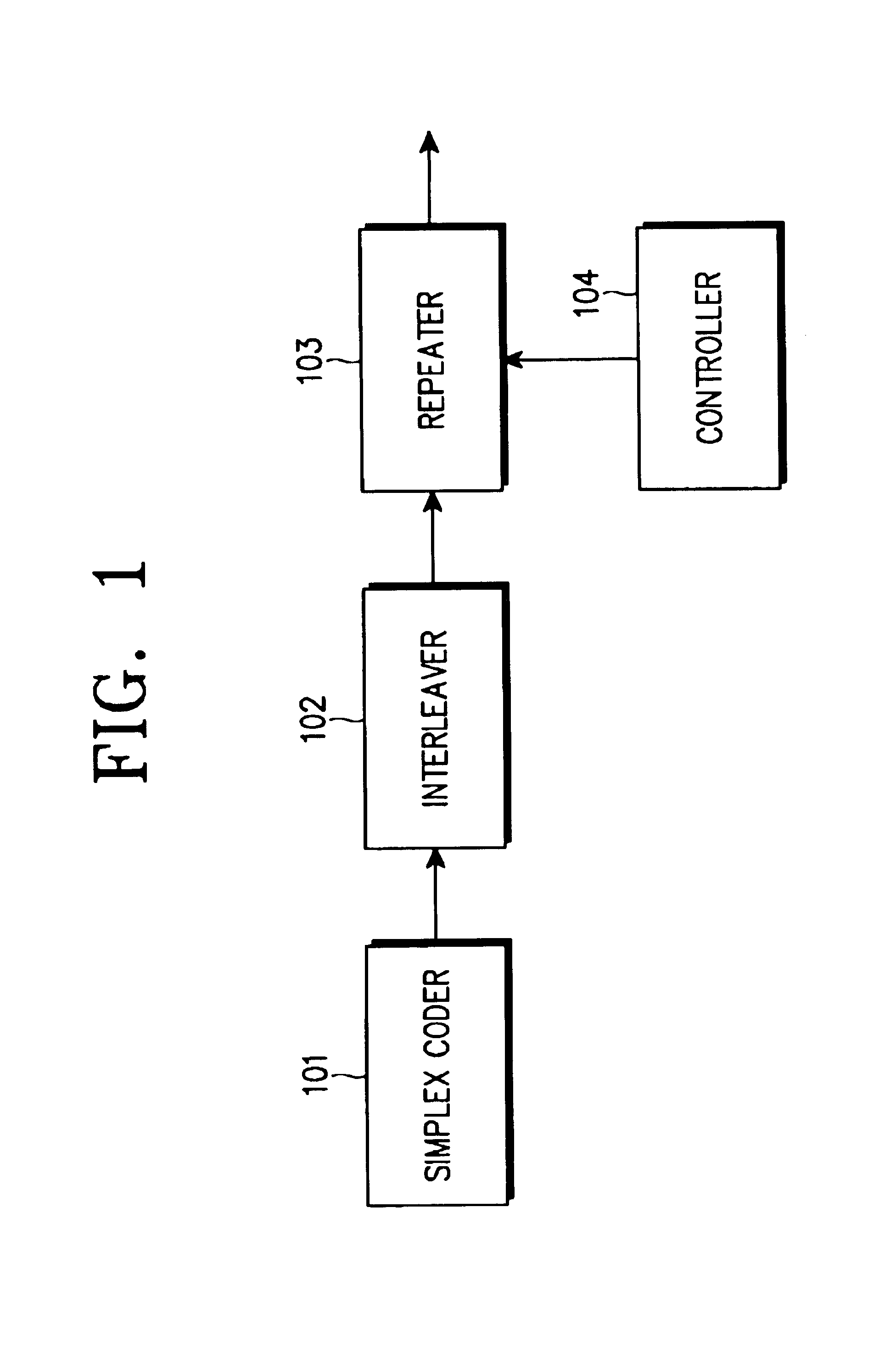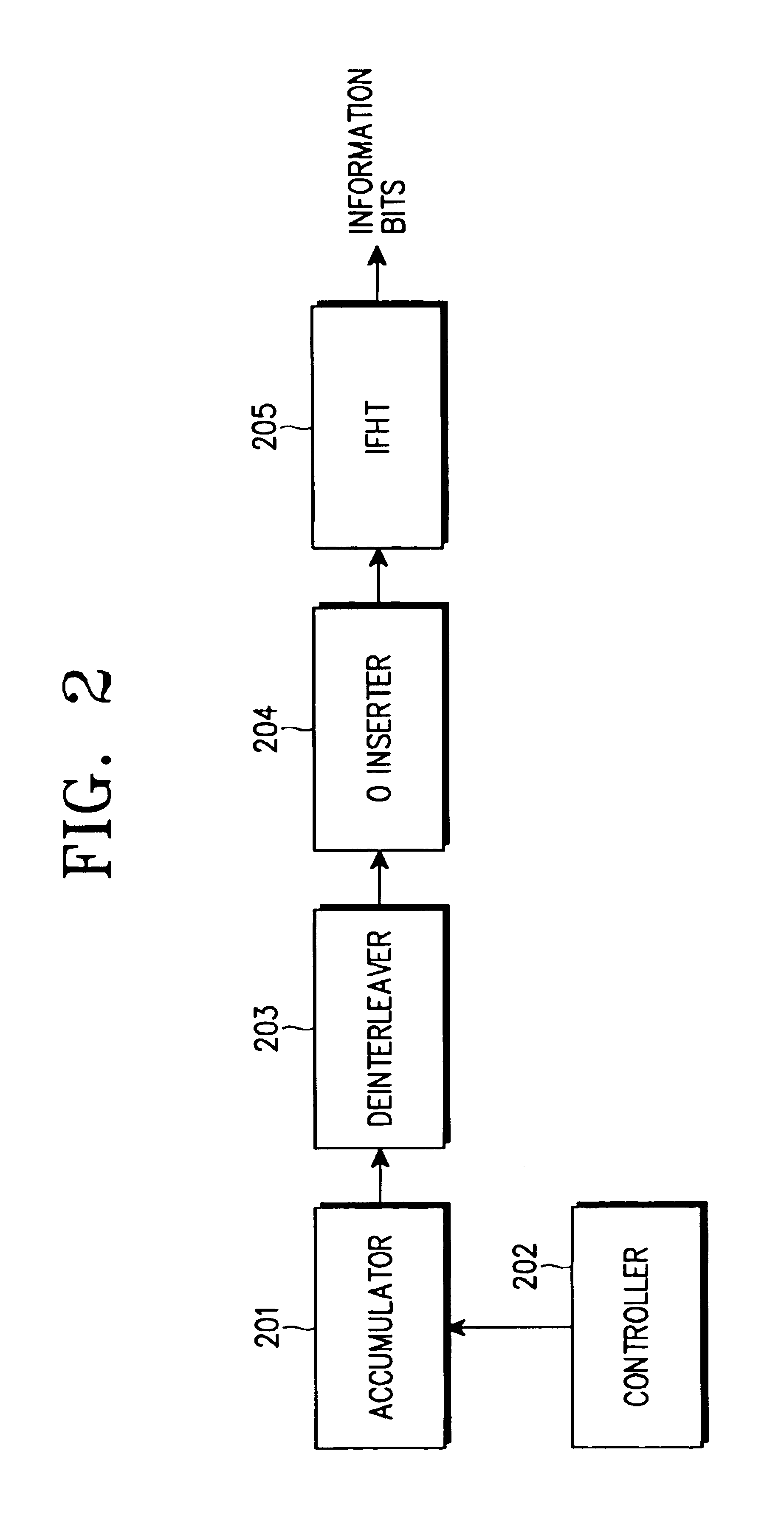Apparatus and method for generating (n, 3) code and (n, 4) code using simplex codes
a technology of simplex codes and apparatus, applied in the field of mobile communication systems, can solve the problems of increasing the size of encoders and decoders, increasing structural complexity,
- Summary
- Abstract
- Description
- Claims
- Application Information
AI Technical Summary
Benefits of technology
Problems solved by technology
Method used
Image
Examples
Embodiment Construction
Preferred embodiments of the present invention will be described hereinbelow with reference to the accompanying drawings. In the following description, well-known functions or constructions are not described in detail since they would obscure the invention in unnecessary detail.
FIG. 1 is a block diagram of an encoding apparatus for generating (n, 3) codes and (n, 4) codes according to the present invention. There will be given a description of generating (n, 3) codes and (n, 4) codes with reference to FIG. 1.
Concerning generation of a (n, 3) code, a simplex encoder 101 generates a simplex codeword. The simplex codeword is produced by puncturing the first column of (m×m) first-order Reed-Muller codes. From (2k, k) first-order Reed-Muller codes, the simplex codewords take the form of (2k-1, k). To generate the (n, 3) codes, (7, 3) simplex codewords are required. Table 1 below lists (8, 3) first-order Reed-Muller codes and (7, 3) simplex codewords are produced by puncturing the first c...
PUM
 Login to View More
Login to View More Abstract
Description
Claims
Application Information
 Login to View More
Login to View More - R&D
- Intellectual Property
- Life Sciences
- Materials
- Tech Scout
- Unparalleled Data Quality
- Higher Quality Content
- 60% Fewer Hallucinations
Browse by: Latest US Patents, China's latest patents, Technical Efficacy Thesaurus, Application Domain, Technology Topic, Popular Technical Reports.
© 2025 PatSnap. All rights reserved.Legal|Privacy policy|Modern Slavery Act Transparency Statement|Sitemap|About US| Contact US: help@patsnap.com



